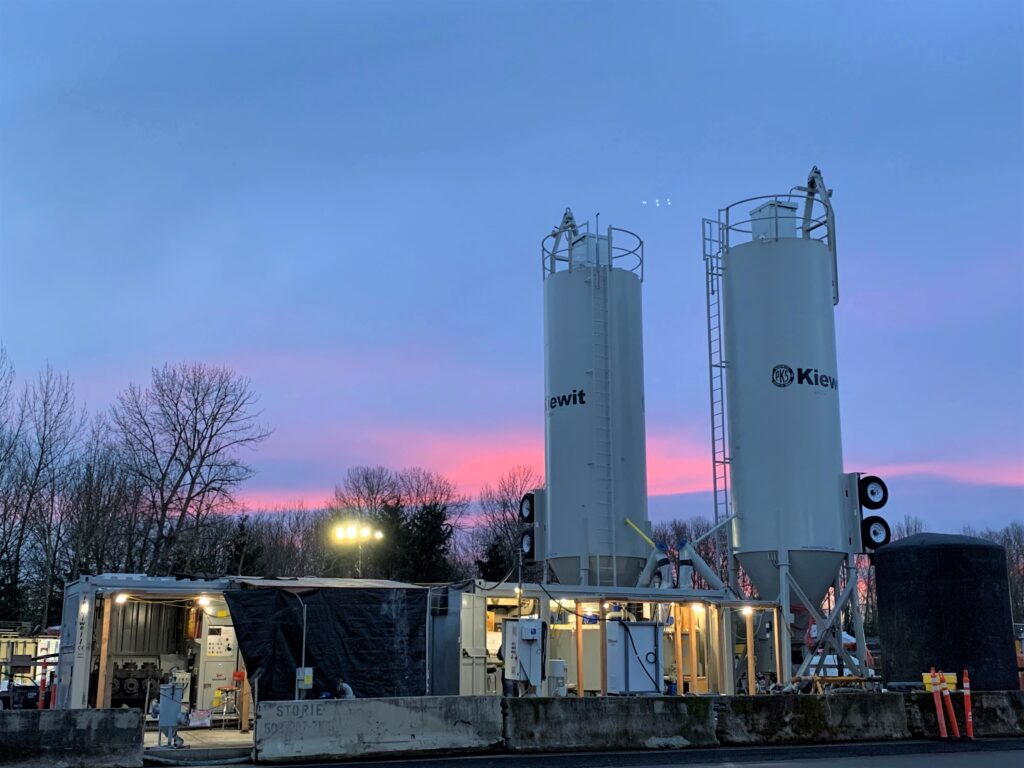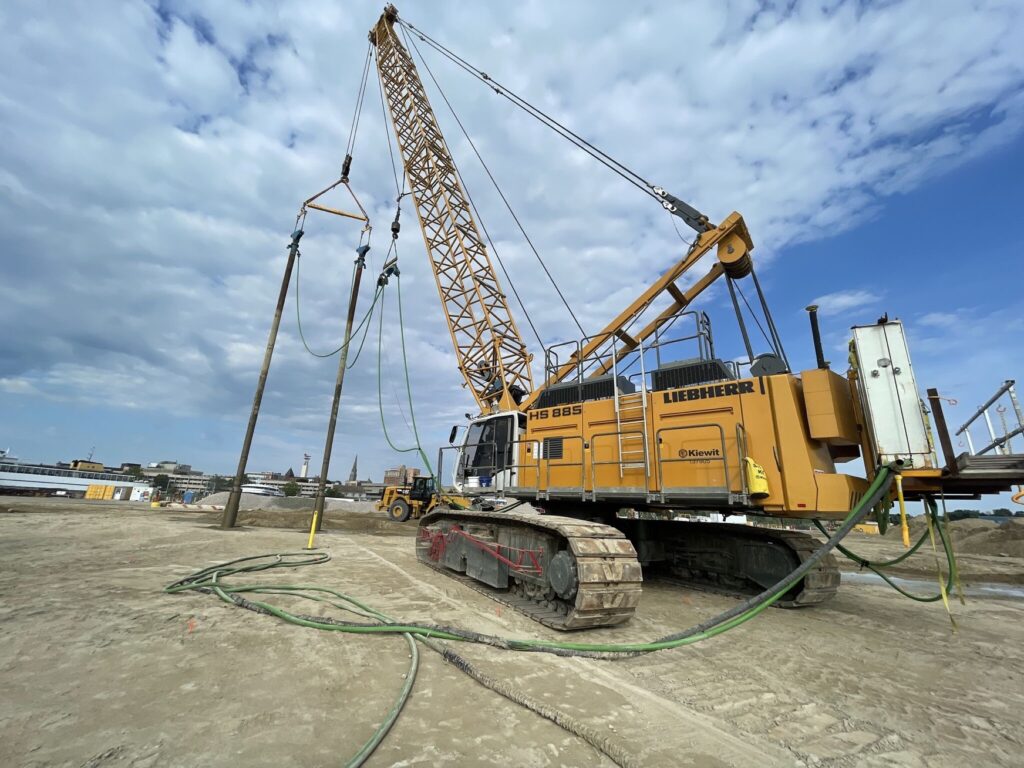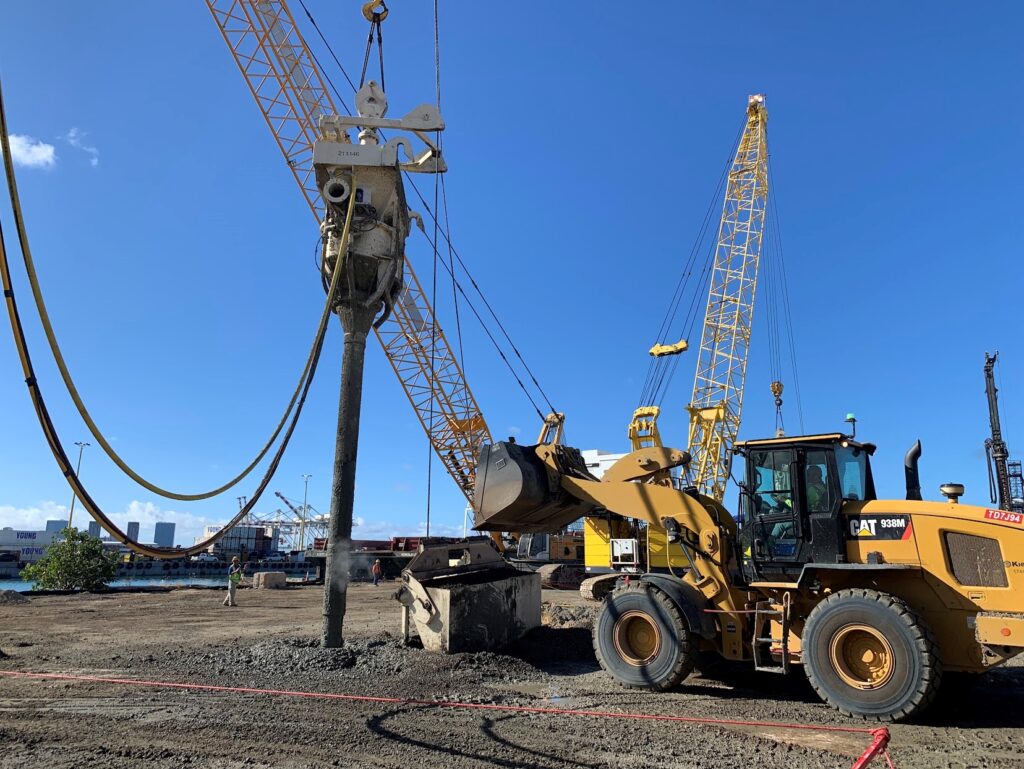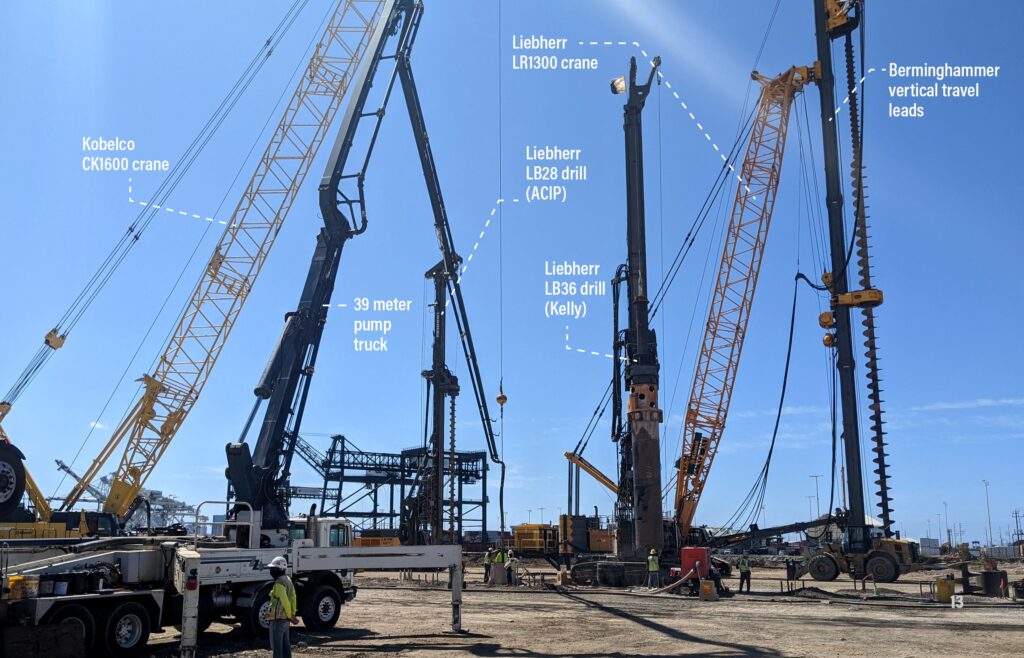Since 2018, Kiewit Foundations Company has set the tone for landmark Kiewit projects to ensure its work comes out of the ground the right way. With a team of in-house foundations experts, Kiewit can tackle any project from the ground down.
“Kiewit Foundations works with Kiewit’s construction and engineering teams to develop solutions that make sense,” said Kiewit Foundations President Mike Ostlund. “The seamless integration between Kiewit Foundations and the rest of the company helps us solve complex problems and keeps our jobs going.”
From pre-construction and design to performing technical foundation work, Kiewit Foundations collaborates with its Kiewit counterparts through every aspect of foundational work to ensure success.
“Our team gives Kiewit a competitive edge,” Ostlund said. “Our in-house group of specialized foundation experts helps strengthen our reputation as one of North America’s top construction and engineering companies because our clients can get everything they need with one company.”
Resilient foundations
The city of Portland is making the largest upgrade since the 1970’s to its only wastewater facility, the Columbia Boulevard Wastewater Treatment Plant. To better protect and preserve the community’s health and surrounding waterways, Portland is adding two new wastewater clarifiers, large tanks where water is separated from the solids. Additionally they are improving the solids handling and loadout systems and updating the electrical and piping systems.
All enhancements for the facility were designed with seismic resiliency in mind, which is crucial for structures to withstand events like earthquakes. The facility’s upgrades are supported by foundations self-performed by Kiewit Foundations.
“The project team brought us in straight out of the gate and that was key,” said Andy Anderson, Kiewit Foundations sponsor. “The Foundations crew worked seamlessly on the project and was able to incorporate several experienced hires into the team, creating an exceptionally cohesive unit.”
With this expertise, the team geared up to perform multiple below-ground scopes over two years.
First out of the gate was the installation of secant pile shoring walls. This shoring is the support of excavation for the new tanks. Drawing on past experience and vast equipment knowledge, the team selected a dual-rotary, cased-auger drilling approach. This ensured the 70-foot-long piles would be installed vertically, preventing deflection and increasing production capacity, compared to more-traditional methods. In just under eight months, the support of excavation systems was completed.
Meanwhile, two ground improvement operations were preparing to install soil-cement shear panels to enhance seismic resiliency: cutter soil mixing (CSM), a technique of pumping cementititous grout into the soil while mechanically mixing with cutter wheels and jet grouting, a technique of injecting high-pressure grout into soil to improve the soil strength and permeability characteristics. Where possible, CSM panels were installed to a depth of over 70 feet, as this soil mixing technique can be cost-effectively performed. In areas where the CSM equipment could not fit, or improved ground was only required 35 feet below the clarifier footprints, yet to be excavated, jet grouting was used.
Self-performed jet grout
According to Anderson, jet grouting offered multiple key advantages beyond constructability and cost benefit.
The team considered a variety of uncertainties and scenarios while coming up with a plan and determining a specific technique. “For example,” explained Anderson, “If the CSM panels didn’t reach full depth, crews could complete the panels by drilling through the soil mix and through or around an obstruction and then jet grout the remaining portion.”
Not just limited to ground improvement, jet grout could also provide backstop for the shoring operation. “If the crew encountered a similar issue with the secant piles, reinforced steel retaining walls built before excavation, or in the unlikely event that unacceptable leaks were discovered later, jet grouting could supplement the support of the excavation system.”
In fact, jet grouting worked so well that it was used again in the second phase of the project. A tied-back jet grout shoring wall was designed and installed along, and underneath, an effluent tunnel, where access limitations and tight tolerances prevented the implementation of conventional shoring methods. “Yet again, jet grout has proven itself to be a most versatile tool in challenging, complicated situations,” said Anderson. This process has led to the development of one of the more unique shoring walls Anderson has seen. “We’re proud to have successfully demonstrated Kiewit’s ability to self-perform this technical work.”
Mahalo pier support
This cohesion could also be seen on the Kapalama Container Terminal Project. Kiewit Foundations supported Kiewit’s efforts to modernize and expand the hub of Hawaii’s commercial harbor system, which at the time was the largest capital improvement in Hawaii harbor history.
“This project is part of Hawaii Department of Transportation’s modernization of Honolulu Harbor, which they’ve been planning for more than 20 years,” said Kyle Nakamura, project manager. “The Kapalama Container Terminal Project increases the capacity of ocean freight delivered to the islands, which is necessary for the continued population growth here and on the neighboring islands.”
Kiewit relied on Kiewit Foundations’ expertise to support Phase 2 work, which includes the waterside construction at Piers 40-43 and adds 1,800 feet of new berthing space. Foundations’ scope also includes dredging along the waterfront and the harbor channel and widening the slips between piers 40 and 43.
“Due to the large structures and critical crane work on the project, ground improvements were necessary prior to any crane work,” Nakamura said. “As a result, the Foundations work was one of the first critical path activities on the schedule.”
Another Foundations’ first: self-performed stone columns
To provide ground support for heavy equipment, Kiewit Foundations expanded its expertise to build stone columns for the first time on the Kapalama project. This design increased the load-bearing capacity of existing soils and reduced potential soil liquefaction onsite.
“Kiewit Foundations develops solutions that are the best for the project and the best for Kiewit,” Ostlund said. “We’re all one company, so we come out of the ground prioritizing what will bring each project the most success.”
In addition to stone columns, the Foundations team drilled cast-in drilled hole (CIDH) piles to depths varying from 60 to 80 feet with immediate proximity to the ocean. These CIDH piles provided structural support for the landslide crane rail beam at Piers 42 and 43, and the combination wall, at Pier 41.
“By having the support of Kiewit Foundations on Kapalama Phase 2, we were able to build very technical foundation work,” said Nakamura. “They took care of the work like any other Kiewit operation and had the same safety culture, work ethic and priorities. We had confidence in what was being built.”
Dual-probe vibro-compaction
At the Connecticut State Pier Infrastructure Improvements project in New London, Connecticut, Kiewit Foundations helped perform ground improvement work.
“The improvements to the Connecticut State Pier are helping transform the existing pier into a state-of-the-art, heavy-life-capable port facility,” said Field Engineer Shelby Palisoul. “When finished, the port will accommodate a wide variety of cargoes, including wind turbine generator staging and assembly.”
According to Palisoul, her team needed to join the two existing piers together by filling the 7-acre-area between the two — this meant placing and compacting 400,000 cubic yards of material through 40 feet of water.
“The material was placed in the area using dump trucks and then compacted in a specific grid pattern,” said Area Manager Pete Maglicic. “This helped consolidate the fill to allow wind-marshalling capabilities that require large load-bearing capacities.”
To compact the fill, the Foundations team used vibro-compaction with a dual-probe set-up. This set-up uses two vibratory probes, rather than one, to densify existing soils. “We believe this the first time that a dual-probe set-up had been used in the United States,” Palisoul said.
Based on the Foundations team’s vibro-compaction test actions, they were able to expand the width of their probes, working up to a 12-foot pattern, allowing the crew to compact a bigger section of ground more quickly.
“The ability for Kiewit Foundations and the Connecticut State Pier team to be agile throughout construction and earn the trust of the client was really impressive,” Maglicic said. “As a well-respected industry expert, Kiewit Foundations has shown our client that we don’t need to go out to market to solve their technical challenges.”
From solving critical technical challenges to integrating seamlessly with the company, Kiewit Foundations helps Kiewit put its best foot forward. The Columbia Boulevard, Kapalama and Connecticut State Pier projects are only three examples. Foundations continues to lay the groundwork for ground breaking projects across the company.
“At Kiewit, we’re a big believer in self-performing,” said Greg Hill, Executive Vice President of Kiewit Infrastructure Group. “Because foundations work is crucial and the first thing out of the gate, we want to do it ourselves and make it better.”







